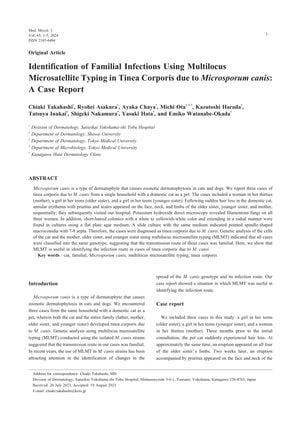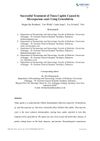Identification of Familial Infections Using Multilocus Microsatellite Typing in Tinea Corporis Due to Microsporum Canis
January 2024
in “
Medical mycology journal
”

TLDR A mother and her two daughters got a skin infection from their cat.
This study reports three cases of tinea corporis caused by Microsporum canis in a single household with a domestic cat. The affected individuals were a mother in her thirties and her two teenage daughters. Symptoms appeared after the cat experienced sudden hair loss, leading to annular erythema with pruritus and scales on the women's faces, necks, and limbs. Diagnosis was confirmed through potassium hydroxide direct microscopy and culture, revealing filamentous fungi and spindle-shaped macroconidia. Genetic analysis using multilocus microsatellite typing (MLMT) showed that all cases shared the same genotype, indicating familial transmission. The study demonstrates the utility of MLMT in identifying infection routes in tinea corporis due to M. canis.
